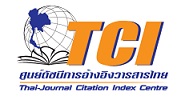Knowledge and practice of radiation safety among cardiac catheterization laboratory personnel in public Thailand hospitals, Thailand
Keywords:
radiation exposure, knowledge, practice, cardiac catheterizationAbstract
The purpose of this cross-sectional descriptive study was to examine the knowledge and practice of radiation safety among cardiac catheterization laboratory personnel. The sample of this study consisted of 404 physicians, nurses, nurse aides, patient assistants, radiologic technologists and cardio thoracic technologists who have worked in cardiac catheterization laboratories of 27 public hospitals throughout Thailand. A self-administered questionnaire was used to collect data on personal demographics, knowledge and practice relating to radiation protection. Data were collected from June to November 2017. Data were then analyzed by using mean and standard deviation, percentage, chi square statistic and Pearson’s correlation.
The results of this study showed that 88.4% of the sample had insufficient knowledge of radiation safety and 35.9% of them had insufficient practice of radiation safety. It was found that radiation protection devices were rarely used, mostly due to the lack of equipment. In addition, there was weak relationship between radiation safety knowledge and practice scores.
The findings implied that most of the personnel in the cardiac catheterization laboratories had insufficient knowledge and practice of radiation safety, and radiation protection devices in most cardiac catheterization laboratories were inadequate. Therefore, training courses on radiation protection should be held to educate nurses, nurse aides and patient assistants. Sufficient amount of radiation protection equipment should be provided and regularly checked.
References
2. Coeytaux K, Bey E, Christensen D, Glassman ES, Murdock B, Doucet C. Reported radiation overexposure accidents worldwide, 1980-2013: a systematic review. PLoS One.
2015;10:1-26.
3. Renaud L. A 5-y follow-up of the radiation exposure to in-room personnel during cardiac catheterization. Health Phys. 1992; 62:10-5.
4. The Heart Association of Thailand under the Royal Patronage of H.M. the King. List of cardiac catheterization laboratory in Thailand hospitals . Bangkok: The Heart Association
Of Thailand under the Royal Patronage of H.M. the King; 2016.
5. Tsapaki V, Faruque Ghulam M, Lim ST, Ngo Minh H, Nwe N, Sharma A, et al. Status of radiation protection in various interventional cardiology procedures in the Asia Pacific
region. Heart Asia. 2011; 3(1):16-24.
6. Tufts University, Department of Public & Environmental Safety. Tufts University Radiation Safety Committee Policies and Procedures Manual [Internet]. 2013 [cited 2018 Feb 19].
Available from: https://publicsafety.tufts.edu/ehs/files/Tufts-University-RSC-Manual-2013.pdf
7. Cousins C, Miller DL, Bernardi G, Rehani MM, Schofield P, Vaño E, et al. ICRP Publication 120: Radiological protection in cardiology. Ann ICRP. 2013; 42:1-125.
8. International Atomic Energy Agency. 10 Pearls: Radiation protection of staff in fluoroscopy [Internet]. 2016 [cited 2016 Dec 15]. Available from:
https://www.iaea.org/sites/default/files/documents/rpop/poster-staff-radiation-protection.pdf
9. International Atomic Energy Agency. 10 Pearls: Radiation protection of patients in fluoroscopy [Internet]. 2016 [cited 2016 Dec 15]. Available from:
https://rpop.iaea.org/RPOP/RPoP/Content/Documents/Whitepapers/poster-patient-radiation-protection.pdf
10. Awosan KJ, Ibrahim M, Saidu SA, Ma'aji SM, Danfulani M, Yunusa EU, Ikhuenbor DB, et al. Knowledge of Radiation Hazards, Radiation Protection Practices and Clinical Profile
of Health Workers in a Teaching Hospital in Northern Nigeria. J Clin Diagn Res. 2016;10:07-12.
11. Abdellah RF, Attia SA, Fouad AM, Abdel-Halim AW. Assessment of Physicians’ Knowledge, of Physician radiation in Egypt. Open J. Radiol. 2015; 5:250-8.
12. Soye JA, Paterson A. A survey of awareness of radiation dose among health professionals in Northern Ireland. Br J Radiol. 2008;81:725-9.
13. Krille L, Hammer GP, Merzenich H, Zeeb H. Systematic review on physician's knowledge about radiation doses and radiation risks of computed tomography. Eur J Radiol.
2010;76:36-41.
14. Weeracharoen R, Suriyapee S, Padungtod C, Sithisarankul P. Knowledge, awareness and practice of radiographer to reduce radiation exposure in small and medium sized community
hospitals. Thammedj. 2016; 3:416-28.
15. Heo Y, Chun H, Kang S, Lee W, Jang T, Park J. Relating factors to wearing personal radiation protectors among healthcare professionals. Ann Occup Environ Med. 2016; 28
:1-6.
16. Friedman AA, Ghani KR, Peabody JO, Jackson A, Trinh QD, Elder JS. Radiation safety knowledge and practices among urology residents and fellows results of a nationwide
survey. J Surg Educ. 2013; 70:224-31.
17. Rahman N, Dhakam S, Shafqut A, Qadir S, Tipoo FA. Knowledge and practice of radiation safety among invasive cardiologists. J Pak Med Assoc. 2008; 58:119-22.
Downloads
Published
How to Cite
Issue
Section
License
บทความนี้ยังไม่เคยตีพิมพ์หรืออยู่ในระหว่างส่งไปตีพิมพ์ในวารสารอื่น ๆ มาก่อน และกองบรรณาธิการขอสงวนสิทธิ์ในการตรวจทาน และแก้ไขต้นฉบับตามเกณฑ์ของวารสาร ในกรณีที่เรื่องของท่านได้ได้รับการตีพิมพ์ในวารสารฉบับนี้ถือว่าเป็น ลิขสิทธิ์ของวารสารพยาบาลโรคหัวใจและทรวงอก






